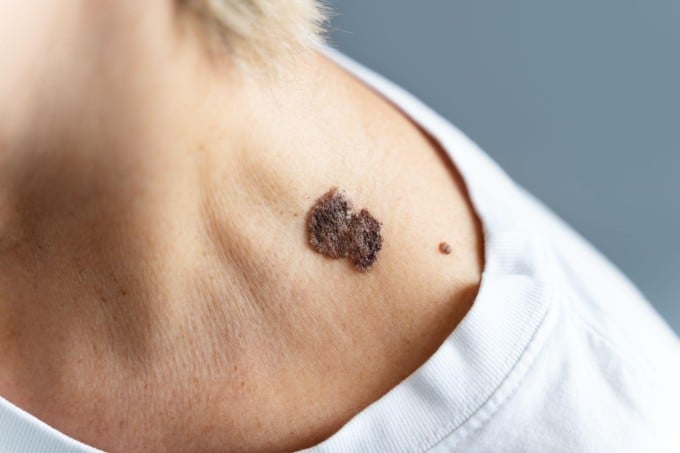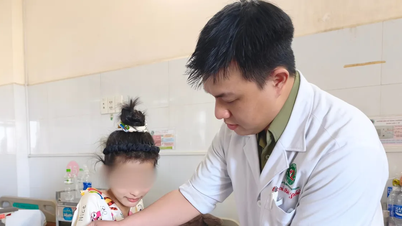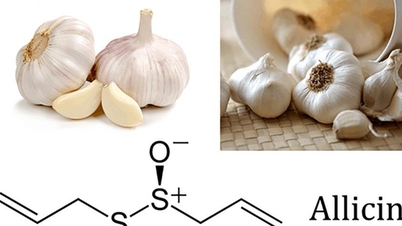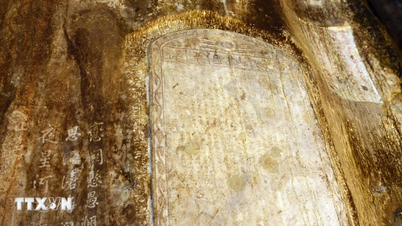Moles that increase in size, have uneven color, and appear as spots, bumps, or ulcers that do not heal for more than two weeks are warning signs of skin cancer.
Skin cancer is a condition in which skin cells grow abnormally. If not treated promptly, skin cancer cells spread to surrounding tissues and invade lymph nodes.
MSc., MD.CKII Doan Minh Trong, Head and Neck Unit, Tam Anh General Hospital, Ho Chi Minh City, said there are three main types of skin cancer, including basal cell carcinoma, squamous cell carcinoma, and melanoma. Each type of skin cancer has different signs.
Basal cell carcinoma appears in areas of skin that are frequently exposed to sunlight, such as the face, neck, arms, back, etc. The lesions are often raised, pale pink or red, and may contain blood vessels that are easily seen with the naked eye. In some other cases, the lesions are flat, keratotic, and scaly.
Squamous cell carcinoma presents as flat, red, pinkish, or brown, scaly, horny lesions.
Squamous cell carcinoma can develop into ulcers. In the early stages, this type of cancer can be cured completely through minor surgery. In cases of late detection or delayed treatment, squamous cell carcinoma spreads to other parts, affecting the patient's health, difficult to treat, and expensive.

Unusual moles or spots or bumps on the skin can be a sign of cancer. Photo: Freepik
Melanoma is less common than basal cell carcinoma and squamous cell carcinoma but is highly dangerous.
Melanoma colors are not the same, on the same tumor but there are dark areas, light areas or many other colors such as brown, black, light pink, tan, white. The tumor border is jagged, the structure is not round, not symmetrical. Melanoma size increases rapidly, spreading to surrounding skin areas.
Melanoma can appear anywhere on the body, most commonly on the chest, back (men) and legs (women). Less common locations are the face and wrists.
Dr. Minh Trong recommends that patients should go to a hospital with a Head and Neck Unit for examination when they have unusual moles or spots, bumps, or ulcers that do not heal for more than two weeks. Some moles that have been present since birth or formed during life suddenly increase in size, have uneven color, become scaly, or swell, and should also be examined.
Nguyen Tram
| Readers ask questions about cancer here for doctors to answer |
Source link



![[Photo] Prime Minister Pham Minh Chinh meets with representatives of outstanding teachers](https://vphoto.vietnam.vn/thumb/1200x675/vietnam/resource/IMAGE/2025/11/15/1763215934276_dsc-0578-jpg.webp)
![[Photo] Panorama of the 2025 Community Action Awards Final Round](https://vphoto.vietnam.vn/thumb/1200x675/vietnam/resource/IMAGE/2025/11/15/1763206932975_chi-7868-jpg.webp)
![[Photo] General Secretary To Lam receives Vice President of Luxshare-ICT Group (China)](https://vphoto.vietnam.vn/thumb/1200x675/vietnam/resource/IMAGE/2025/11/15/1763211137119_a1-bnd-7809-8939-jpg.webp)






































































































Comment (0)